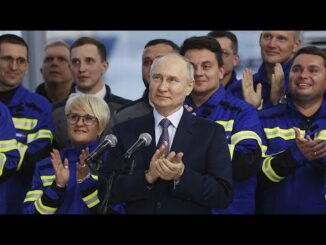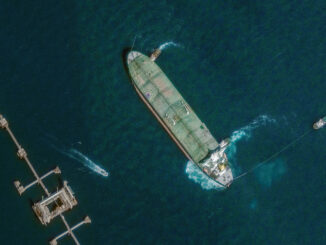
The ongoing conflict in Ukraine has reshaped global energy dynamics, with Western sanctions on Russia diverting oil and gas flows, creating discounts, and forcing new trade patterns. But what if the war ended abruptly—say, tomorrow—and sanctions were lifted? Would oil prices crash as Russian crude floods the market? Or could prices actually rise due to normalized trading without the distortions of discounts?
Drawing on recent data and expert analyses, this article explores the potential ripple effects on oil markets, natural gas, investors, and key players like India, China, and Europe.
Are you from California, New Jersey or New York and need a tax break?
Russia’s Current Oil Exports: Volumes and Destinations in 2025
Russia remains a powerhouse in global oil production, but sanctions have capped its revenues and shifted its export destinations away from Europe toward Asia. In the first half of 2025, Russia’s crude oil exports averaged around 4.3 million barrels per day (b/d), a decline from 4.8 million b/d in the same period of 2024.
Seaborne crude exports in June 2025 totaled about 24.8 million tonnes (roughly equivalent to 7.5-8 million b/d when including pipeline flows), down 5% month-on-month.
Overall, exports have slumped modestly since 2022, with a 4% drop in the first seven months of 2025 compared to 2024.
The big shift is in buyers: Asia and Oceania now absorb 63% of Russia’s crude exports.
India leads as the top destination, receiving the largest volumes in early 2025, followed by China.
Recent breakdowns show China importing about 0.982 million b/d, Turkey 0.377 million b/d, the Netherlands 0.358 million b/d (despite sanctions, via blended or indirect routes), and Italy 0.351 million b/d.
India’s imports from Russia surged from $2.31 billion four years ago to $52.2 billion in 2024, highlighting the scale of this pivot.
Revenue-wise, Russia’s fossil fuel exports, dominated by oil, brought in about €593 million per day in June 2025, with oil accounting for the lion’s share at €610.34 billion since the war began.
Natural Gas and LNG: A Shrinking Footprint
Russia’s natural gas sector has been hit harder than oil, with exports plummeting due to Europe’s diversification efforts. In the first half of 2025, liquefied natural gas (LNG) exports fell 4.4% year-on-year, totaling around 16-17 million tonnes for the period.
Supplies to Europe dropped 13% to 7.9 million tonnes in January-June, while overall pipeline gas exports to the continent are on track to hit historic lows of under 16 billion cubic meters (bcm) for the year—a 47% plunge from 2024.
Total gas production dipped 3.2% to 334.8 bcm in the first half, despite surges in domestic use and exports to China via pipeline.
Destinations have shifted eastward: Asia-Oceania takes 30% of natural gas exports, with China as a key buyer.
LNG revenues fell 19% month-on-month in July 2025 to €30 million per day, reflecting a 21% volume drop.
Forecasts suggest LNG exports could reach 47-50 bcm by year’s end, but Europe is unlikely to resume large-scale imports even if sanctions ease.
Russia’s Production: Maxed Out with Limited Cushion
A critical factor in any post-war scenario is Russia’s production capacity. Data from Standard Chartered shows Russia averaging 9.01 million b/d in the first half of 2025—610,000 b/d below pre-invasion 2021 levels—and operating at maximum capacity with little spare room.
The International Energy Agency (IEA) echoes this, doubting Russia’s ability to sustain or restore higher output, estimating sustainable capacity at 9.8 million b/d for crude alone.
Declines persisted through 2024 into 2025, driven by OPEC+ cuts, aging fields, and sanctions limiting technology access.
Even with Western firms returning post-sanctions, long-term reservoir damage from overproduction could limit surges.
Implications for Oil and Gas Investors if Sanctions Are LiftedIf sanctions vanish, Russia could sell openly without the G7 price cap (currently $60/b for crude), potentially fetching higher prices for its Urals blend, which trades at discounts of $10-15/b.
However, with production maxed out, don’t expect a flood of new supply—Standard Chartered sees “limited supply cushion,” meaning markets might not see the feared oversupply.
This could actually support higher oil prices, as the end of discounted Russian crude removes cheap barrels from the market, tightening supply.
Sanctions have forced Russia to sell at cheaper prices, distorting global prices downward; lifting them could normalize trading, potentially pushing Brent crude up by reducing those distortions.
For investors, this means opportunity in non-Russian producers (e.g., OPEC+, U.S. shale) if prices rise, but risks if peace talks falter and volatility spikes.
Gas investors face similar dynamics: Limited pipeline returns to Europe and maxed LNG capacity suggest stable or higher prices, with U.S. LNG exports potentially benefiting if Russian flows don’t surge.
Overall, revenues for Russia could rise short-term from premium pricing, but long-term output constraints limit upside.
What This Means for India and China
India and China have been the big winners from sanctions, snapping up discounted Russian crude—India at 30-40% of its imports, China similarly.
If lifted, discounts evaporate, forcing them to pay market rates or switch to costlier Middle Eastern or African suppliers.
This could squeeze refiners’ margins: India made $16 billion in “excess profits” by refining cheap Russian oil into products for export.
Higher costs might raise domestic fuel prices, impacting inflation and growth.
China, facing U.S. pressure, could see supply disruptions if secondary sanctions intensify, though diversification (e.g., to Iran) offers buffers.
Europe’s Market: The End of Cheap Indirect Imports?
Europe has cut direct Russian imports but indirectly benefits from cheap diesel and gasoline refined in India from Russian crude.
In 2025, Europe ramped up diesel imports from India, China, and Turkey, which in turn boosted Russian crude intake.
If sanctions lift and discounts end, India’s refining arbitrage shrinks, potentially reducing these cheap exports and raising European fuel prices.
Europe might not resume direct Russian buys due to diversification (e.g., U.S., Norway), leading to tighter markets and higher costs for consumers.
Some hope this could accelerate the green transition, but strain economies in the short term. The real problem for the EU, and the UK, is the Net Zero energy policies that lead to total deindustrialization.
In summary, an end to the Ukraine war and sanctions wouldn’t necessarily crash oil prices—Russia’s maxed-out production limits supply surges, and the removal of cheap discounted crude could even buoy prices. Investors should watch for volatility, while India and China face higher costs, and Europe loses its backdoor bargains. The energy world post-war would be more normalized, but not without new challenges.
Avoid Paying Taxes in 2025
Crude Oil, LNG, Jet Fuel price quote
ENB Top News
ENB
Energy Dashboard
ENB Podcast
ENB Substack






